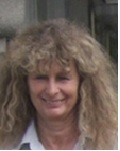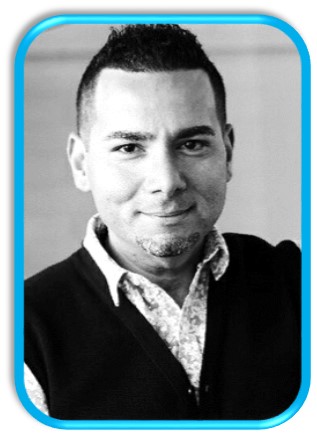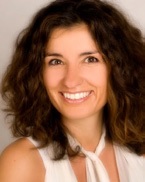Day 2 :
Keynote Forum
Judith Miklossy
International Alzheimer Research Center, Switzerland
Keynote: Spirochetes, Alzheimer’s disease and other chronic inflammatory disorders. The importance of periodontal pathogens.

Biography:
Judith Miklossy received the MD, PhD degrees and Board certificates of Neurology, Psychiatry, Psychotherapy (EU&AELE conform) from the University of Debrecen and National Board of specialization in Hungary and the university degrees PD (DSc), MER and Board certificate in Neuropathology in University of Lausanne and Swiss Medical Federation in Switzerland. She headed the Neurodegeneration research group in the University Institute of Pathology in Lausanne and was head of neuropathology laboratory (Kinsmen Laboratory of Neurological Research, British Columbia University, Vancouver, Canada). She is founder and presently Director of the Alzheimer's Prevention International Foundation, International Alzheimer Research Center, Switzerland.
Abstract:
That pathogens suppress, subvert or evade host defenses and establish chronic or latent infection had received little attention in the past. Increasing number of recent observations show the involvement of pathogens in various chronic disorders, including stomach ulcer, atherosclerosis, cardio- and cerebrovascular disorders, diabetes, neurodegenerative disorders, and Alzheimer's disease (AD). Various spirochetes, in an analogous way to Treponema pallidum, are involved in the pathogenesis of several chronic disorders including Alzheimer’s disease (AD). Borrelia burgdorferi, the causative agent of Lyme disease and various periodontal pathogen Treponemes (T. denticola, T. pectinovorum, T. amylovorum, T. maltophilum, T. medium, T. socranskii) persist in the brain and cause dementia and beta amyloid deposition. Spirochetes are able to reproduce in vitro and in vivo all the pathological and biological hallmarks defining AD. A strong statistically significant association between spirochetes and Alzheimer’s disease fulfills Hill’s criteria and confirm a causal relationship. Validation of these observations by historic and recent reports further confirm that senile plaques are made up by spirochetes and correspond to biofilms. That host pathogen interactions in chronic spirochetal infection are identical to those occurring in AD indicates that escaping host immune reactions, spirochetes sustain chronic infection and cause dementia and amyloid deposition. Association of co-infecting pathogens and formation of multi-bacterial biofilms further aggravate the degenerative process and the outcome of dementia. These observations indicate that Alzheimer’s dementia and other chronic inflammatory disorders might be prevented. The impact on health care and the role of dentistry in prevention is enormous.
Keynote Forum
Ziyad S Haidar
University of the Andes, Chile
Keynote: nanoDENTISTRY: An Evidence-based Tale of Two Careers – Journey from traditional to multidisciplinary Dentistry, with a nano twist"

Biography:
Ziyad S. Haidar D.D.S., Cert Implantol, M.Sc. OMFS, MBA, Ph.D. Research Professor and Scientific Director, Faculty of Dentistry, Universidad de los Andes, Santiago de Chile; is a dentist (DDS, AUST, UAE), oral implantologist (Cert Implantol UMDNJ, USA), oral and maxillofacial surgeon (M.Sc., McGill U, CANADA) and Health Care Organization Management Specialist (MBA, JMSB, CANADA) with a doctorate (Ph.D., McGill U, CANADA) in biomaterials, drug delivery and tissue engineering, followed by post-doctoral training at the Shriners Hospital, McGill University Health Center, Montreal, Canada. He is the Founder and Head of the Biomaterials, Pharmaceutical Delivery and Cranio-Maxillo-Facial Tissue Engineering Laboratory and Research Group (BioMAT’X), a newly-established R&D&I unit within the expanding Centro de Investigación Biomédica (CIB) and Facultad de Odontología, Universidad de los Andes in Santiago de Chile. Ziyad is also a Faculty member in the Ph.D.
Abstract:
Synopsis: A seminar envisioned to broaden horizons of into (a) the importance of evidence-based and translational research and (b) impact of biomaterials, bioengineering, pharmaceutics and nano-bio-technology R&D&i on medicine in general and dentistry in specific, via realistic demonstration of breaking barriers for innovation.
- Endodontics | Basic Dentistry| Oral and Maxillofacial Surgery| Dental and Oral Health
Location: Waterfront 2

Chair
Eleni Still
, CEO, Style for your smile, Germany

Co-Chair
Ziyad S. Haid
Profesor Investigador y Director BioMAT’X, Chile
Session Introduction
Dheyaa .N. Obada
Baghdad University, College of Dentistry
Title: Emergency Treatment With Diode Laser for Endodontically Treated Tooth With Periapical Abcess Comparing with traditional surgical treatment
Biography:
DHEYAA .N.OBADA has graduated from Baghdad university ,collage of dentistry at age 23 years ,starting his researching in 2003 on APEX LOCATER made by him ,in MOROCCOR specialized dental center ,in 2005 he made research on bleaching effect and post-operative pain, in DIYALA ,from 2006 till 2017 he continue his researches on methods and technique that improve the success rate for endodontic treatment with fellow up for 10 years in his private clinic in al-sader city
Abstract:
Aim: To investigate sign and symptoms, bactericidal effect for using diode laser 810nm ,and calcium hydroxide , povidone iodine on endodontically treated tooth with periapical abscess
Material and Method: Patient with tooth no.9 failed endodontic treatment with periapical abcess,x ray ,diode laser 810nm,water irrigation ,calcium hydroxide ,povidone iodine ,removing gutta percha from infected tooth ,reaming and filling ,laser fibre passed over the apical foramen 2mm ,4mm according to the size of lesion ,,lasing 2sc then stop for 4 sc with water irrigation to avoid over heat ,, till 20 sc of lasing completed ,apply calcium hydroxide dressing with povidone iodine ,examine patient sign and symptom during 8 days ,x ray after 6 months.
Result: The patient shows no swelling, severity of pain became less, however antibiotic and analgesic are recommended.
Conclusion: Using diode laser in PERIAPICAL ABCESS IF WE REACH THIS AREA had less traumatic effect than using a flap ,, less healing time , with cooling technique consideration, and calcium hydroxide and povidone iodine with bactericidal effect on the lateral canal, we will get fine result.
Rajashree Dasari
Panineeya Institute of Dental Sciences and Research Centre, India
Title: Correlation between Expression of Cyp24, Cyp27 and Translocation of VDR in to the Nucleus of Aggressive Periodontitis Patients.
Biography:
Dr.Rajashree Dasari has completed her postgraduation from NTR University of health sciences and currently working as Associate professor at Panineeya Institute of Dental Sciences, India. Her Passion for research and understanding the pathogenesis of periodontal disease creates a new pathways for improving the ability of treating, maintaining the oral health. She also won the best paper award for the research done related to the role of vitamin D receptor at Hongkong International conference, Hongkong in 2014.
Abstract:
Generalized aggressive periodontitis exhibits severe inflammation and alveolar bone loss. 1, 25-dihydroxyvitamin D3 (1, 25(OH) 2D) is the active form of vitamin D3, which plays an important role in calcium and bone metabolism. Vitamin D receptor regulates both bone metabolism and inflammation related genes. It plays a key role in oral homeostasis and its dysfunction may lead to periodontal disease. 1,25(OH)2D activity is regulated by three genes, 25-hydroxyvitamin D-1α-hydroxylase (CYP27), 25-hydroxyvitamin D-24-hydroxylase (CYP24) and vitamin D receptor (VDR). The aim of the present study is to analyze the role of these enzymes in expression of VDR receptor in the nucleus of gingival tissue cells of aggressive periodontitis patients. This study included 31 systemically healthy subjects with aggressive periodontitis and 30 healthy individuals. The level of expression of the above genes was estimated by polymerase chain reaction and the nuclear expression of vitamin D receptor by immunohistochemical analysis. Individuals of both the groups expressed CYP 24 and CYP 27 with medium to low intensity. There was no statistical difference in overall degree of expression of CYP 24 between control and test group. CYP 27 was expressed less in aggressive periodontitis patients than the healthy group [0.461, p>0.01]. VDR expression in the nucleus was more in the healthy patients than the test group. The local tissue specific synthesis of 1,25(OH)2D3 is important as it plays a key role in disease progression. Cyp 24 and Cyp 27 functions in vitamin D target tissues to degrade and generate 1,25(OH)2D3 respectively. Thus the concentration of this enzyme and regulation of its expression is a primary determinant of the overall biological activity within the cells. The factors affecting these enzymes also play an equal role and should be considered. And it can also use as a marker for disease progression.
Young-gun Kim
Yonsei University, Seoul, Republic of Korea
Title: A proposal for safe and efficient injection points of botulinum toxin in temporal region for sleep bruxism
Biography:
Mar 2002 ~ Feb 2008 : DDS, predental course and dentistry, College of Dentistry, Yonsei university, Seoul, Republic of Korea.Mar 2010 ~ Feb 2013 : Residency program, Department of Orofacial pain and Oral medicine, College of Dentistry, Yonsei university, Seoul, Republic of Korea. Apr 2013 ~ Apr 2016 : as a Army surgeon in dental surgery, Republic of Korea Army. May 2016 ~ Present : Fellowship, Department of Orofacial pain and Oral medicine, College of Dentistry, Yonsei university, Seoul, Republic of Korea
Abstract:
The aim of this study was to simplify the optimal temporal areas for safe and reproducible approach for BoNT injections into the temporalis muscle(TM) by carrying out detailed dissections and measurements of the structures in the temporal area, and to virtually represent a topographic mapping of postural relations among the major anatomical structures such as superficial temporal artery, middle temporal vein and temporal branch of the facial nerve in the temporalis muscle of the temporal area.
Nineteen sides of TM from 10 embalmed Korean cadavers were used in this study. The lateral canthus of the eye and tragus were set as landmarks to establish the reference line of this study. The topographies of the superficial temporal artery, middle temporal vein, temporalis tendon, and the temporalis muscle were evaluated. On the disclosed boundary of the muscle, we can visualize an imaginary, rectangular TM in the temporal area. The surface of TM can be divided into 9 equally sized rectangular areas. The topography of studied anatomical structures in these nine compartments was observed and measured from the superficial to deep layers.
After drawing the muscle boundaries, they were divided into nine compartments in order to simplify the relationship between the soft-tissue landmarks and the anatomical structures, and to more facilitate the description of appropriate injection sites. The relative positional ratios between the anatomical structures were constant in all of the specimens. The reference line was first established as C–T, and the distance between C and E' was set as the bottom side of the TM rectangle. The vertical sides of the rectangle were configured at 80% of the bottom side(ratio 5:4). Based on the results of this study, Am, Mu, and Pm were proposed as suitable BoNT injection sites.
